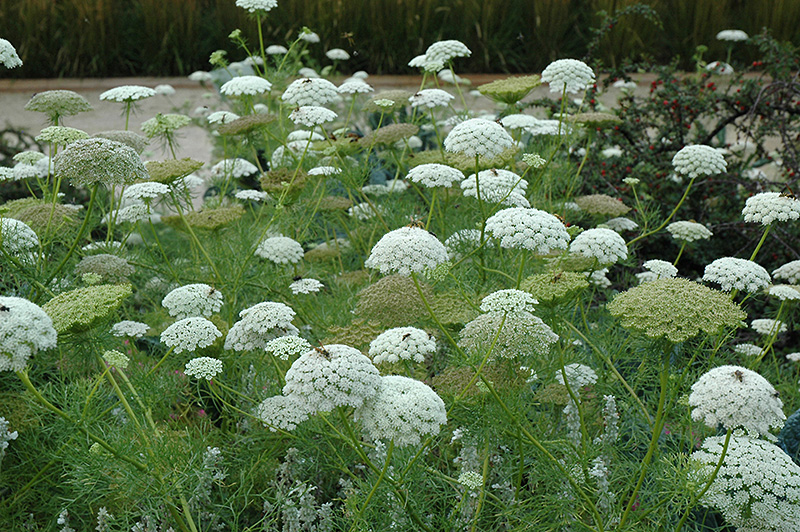Height: 3 feet
Spread: 18 inches
Sunlight:
![]()
![]()
Hardiness Zone: (annual)
Other Names: False Queen Anne's Lace, Bullwort, Bishop's Weed
Description:
A tall, branching variety with finely divided, feathery foliage; bears an abundance of large, white lacecap blooms in summer, adding beauty and depth to the garden; excellent for containers, and a great cut flower
Ornamental Features
Bishop's Flower features showy white lacecap flowers rising above the foliage in mid summer. The flowers are excellent for cutting. Its ferny leaves remain bluish-green in color throughout the season.
Landscape Attributes
Bishop's Flower is an herbaceous annual with an upright spreading habit of growth. It brings an extremely fine and delicate texture to the garden composition and should be used to full effect.
This is a relatively low maintenance plant, and should not require much pruning, except when necessary, such as to remove dieback. It has no significant negative characteristics.
Bishop's Flower is recommended for the following landscape applications;
- Mass Planting
- Rock/Alpine Gardens
- General Garden Use
- Container Planting
Planting & Growing
Bishop's Flower will grow to be about 3 feet tall at maturity, with a spread of 18 inches. This fast-growing annual will normally live for one full growing season, needing replacement the following year.
This plant does best in full sun to partial shade. It does best in average to evenly moist conditions, but will not tolerate standing water. It may require supplemental watering during periods of drought or extended heat. It is not particular as to soil pH, but grows best in sandy soils. It is highly tolerant of urban pollution and will even thrive in inner city environments. This species is not originally from North America.
Bishop's Flower is a fine choice for the garden, but it is also a good selection for planting in outdoor pots and containers. With its upright habit of growth, it is best suited for use as a 'thriller' in the 'spiller-thriller-filler' container combination; plant it near the center of the pot, surrounded by smaller plants and those that spill over the edges. It is even sizeable enough that it can be grown alone in a suitable container. Note that when growing plants in outdoor containers and baskets, they may require more frequent waterings than they would in the yard or garden.
Disclaimer - This Plant Finder tool is an online resource representing many of the varieties that we carry over the course of the season, and is intended for informational purposes only. Inventory varies seasonally, so we cannot guarantee that every plant will be in stock at all times - please contact the store directly for current availability. It does not include our entire selection of plants, so be sure to visit our store to see varieties that may not be represented on this list.

